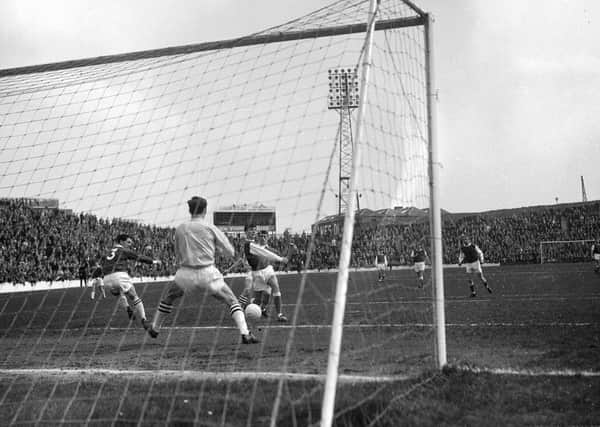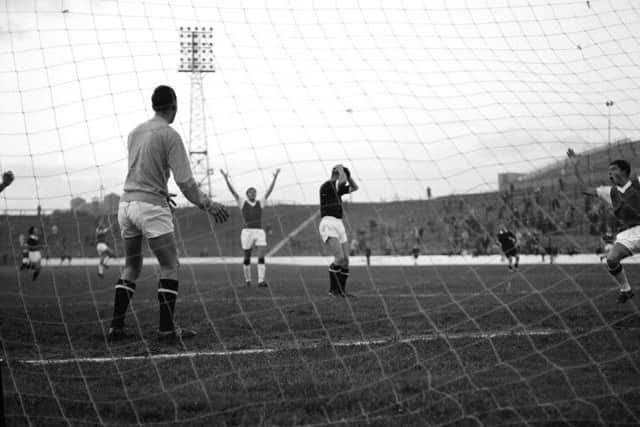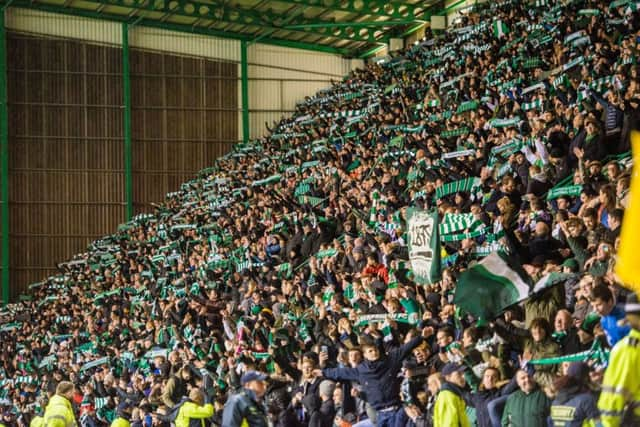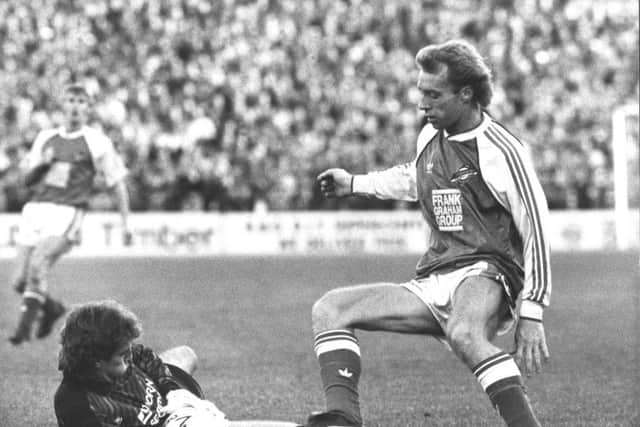Hibs history: Easter Road throughout the ages
This article contains affiliate links. We may earn a small commission on items purchased through this article, but that does not affect our editorial judgement.


DOWNLOAD THE EDINBURGH EVENING NEWS APP ON ITUNES OR GOOGLE PLAY
Advertisement
Hide AdAdvertisement
Hide AdFrom the Meadows to ‘Hibernian Park’, Hibs continued to gain popularity but it was only when they moved to Easter Road that the foundation of the club we know today was formed.The first game at Easter Road was played on February 4 in a friendly against Clyde, but it was the first league game that demonstrated the true Easter Road atmosphere. In the new Division 2, Hibs were 2-1 down against Greenock Morton, before eventually winning the game 9-2 after being buoyed by the crowd.


Rather than the state of the art stadia that fans are now accustomed to, Easter Road was very much a work in progress when Hibs arrived at the site. Having obtained money from previous games at their old ground, wooden platforms were placed around three sides of the pitch with a stand and dressing rooms also in place. Despite the prime location of Easter Road for their ever-growing fanbase, many in the background of the club did not want to further invest in the stadium due to a potential move to Aberdeen in 1902 (note, Aberdeen Football Club had not yet formed). The ground was still being leased by the club from city planners and with such uncertainty, those running the club felt that it would be unwise to invest in the land.
In 1909, the club also considered a move to in Piershill but a court order saw the club lose out to North British Railway who won a court order to build a railway line over the ground. Despite this ruling, no line was ever built. Hibs remained ‘stuck’ with Easter Road despite attempts to move.
As other clubs continued to develop their grounds, it wasn’t until 1922 when the lease of Easter Road was secured that HIbs really got up and running. The signing of the lease allowed Hibs to comfortably invest in the ground. In 1924 three banks of terracing were raised on the North, East and South sides of the ground, as well as the creation of a main grandstand offering 4,480 seats on the West of the park.
Advertisement
Hide AdAdvertisement
Hide AdThe pitch was also moved 40 yards to allow the stand to be built and the slope of the pitch significantly reduced to six feet. Terracing in the East stand was the largest at the ground and in 1950, more than 65,000 people attended an Edinburgh Derby at Easter Road. This whopping attendance inspired the Hibs board to attempt to further expand the stadium by increasing the sides of the other terraces to the size of the East.


While Hibs were slightly behind initial development of their stadium due to the uncertainty regarding the lease, the Easter Road based side were pioneers in floodlight technology. In fact, the advanced floodlights at the ground caused controversy on their own.
In 1954, floodlights were used at the ground for the first time in a 2-0 defeat to Hearts. While roof-mounted floodlights were the norm at the time, Hibernian recruited a local company, Miller & Stables, to construct 100ft pylons at each corner of the ground. This was believed to bring better lighting and represented the first type of structure to be built for football anywhere in the world. This would soon become the norm throughout world football, but, in 1958 this was not the case. Four years after their introduction, Aberdeen refused to play at Easter Road believing that the floodlights gave the home side an unfair advantage. This pioneering of floodlights was not the last thing that Hibs would be the first to try in Scotland.
In 1965 the ‘Cowshed’ opened behind the goals at the ‘Famous Five’ stand, yet the cowshed was one of the only changes in Easter Road which took place in said period. This would all change in the 1980s.
Advertisement
Hide AdAdvertisement
Hide AdFollowing sporting disasters across the UK, the capacity at Easter Road was reduced to 30,000 in compliance with 1975 Safety at Sports Grounds Act. In 1980, Hibs became the very first club in Scotland to install undersoil heating. The successful installation led to Hibs playing a friendly in 1981 after a series of fixtures were cancelled across the UK. Seating was then placed in the East Stand as well as a roof. Easter Road needed serious renovation following years of falling into slight disrepair, and a move was taken to try and modernise the ground. In 1987 seats were installed in the unroofed South Terrace.


The redevelopment of The Cowshed and Dunbar End of Easter Road began in 1995 when both areas were demolished to make way for the existing North and South Stands at a cost of £8 million. The development saw an end to the historic corner floodlights erected in the 1950, with the lights replaced by a system on the East Stand roof. As part of the building of new stands, Easter Road was confirmed as an made all seater stadium. The North Stand would be named the Famous Five stand to honour Hibs stars of the 1950s.
2000 was a historic year for the club as it saw an end to the famous Easter Road slope. The 6ft slope was flattened to offer a level playing surface. In 2001, the famous old grandstand at the club was knocked down to make way for a state of the art stand offering a number of other functions as well as new changing rooms.
All of the work was almost in vain however following a serious proposal of a Straiton ground share with Hearts in 2003, however, this was categorically rejected by the Hibs support with Easter Road being confirmed as the home of Hibs in October that year.
Advertisement
Hide AdAdvertisement
Hide AdThe final building project of Easter Road began in 2010 with work beginning on a new East Stand. Following the demolition of the old stand, a new stand opened taking the capacity of the ground to over 20,000 and maintained the historic ‘one tier’ stand that was a tribute to the history of the previous East Stand.